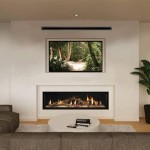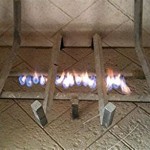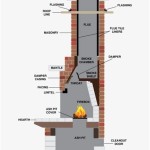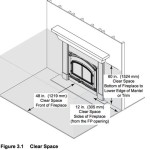Superior Fireplace Insert Blower Motor: Function, Maintenance, and Troubleshooting
A fireplace insert blower motor is a critical component in the efficient operation of a fireplace insert. These inserts are designed to improve the heating efficiency of a traditional fireplace by creating a closed combustion system and circulating heated air into the room. The blower motor plays a vital role in this process, drawing cooler air from the room, passing it over the heated firebox, and then forcing the warmed air back into the living space. Understanding the function, maintenance, and potential issues related to the Superior fireplace insert blower motor is crucial for homeowners seeking optimal heating performance and longevity of their fireplace system.
The primary function of a fireplace insert is to convert a standard, often inefficient open-hearth fireplace into a more effective heating appliance. Fireplace inserts achieve this by sealing off the fireplace opening with a metal box that fits inside the existing firebox. This box is designed to contain the fire and improve combustion efficiency. The blower motor then enhances heat distribution, making the fireplace insert a practical supplemental heating source. Without a functioning blower motor, much of the heat generated by the fire would simply rise up the chimney, reducing the overall heating effectiveness.
Superior Fireplace is a well-known brand in the fireplace industry, and their insert models often incorporate robust blower motors designed for reliable performance. These motors are typically electric and are designed to operate quietly while providing a significant boost to the airflow around the firebox. The specifications of a Superior fireplace insert blower motor can vary depending on the specific model of the insert, but generally, they are chosen to provide adequate airflow for the size and heat output of the unit. A properly functioning blower motor contributes significantly to the overall comfort and energy savings provided by the fireplace insert.
Understanding the Role of the Blower Motor in Heat Distribution
The blower motor's primary function is to enhance the convection process in a fireplace insert. Convection is the transfer of heat through the movement of fluids (in this case, air). Without a blower, the heat from the firebox would primarily radiate outwards, warming objects directly in front of the fireplace. While radiant heat is beneficial, it is not as effective at heating an entire room as forced-air convection.
The blower motor draws cooler air, typically from floor level near the fireplace insert. This cooler air is then channeled through a series of ducts or passages around the firebox. As the air passes over the heated metal surfaces of the firebox, it absorbs heat. The blower motor then forces this warmed air out into the room through vents, distributing the heat more evenly. This forced-air circulation allows the heat to reach more distant areas of the room, creating a more comfortable and consistent temperature.
The efficiency of the blower motor directly impacts the overall heating effectiveness of the fireplace insert. A powerful and properly functioning blower motor can significantly increase the amount of heat transferred into the room, reducing the reliance on other heating systems. Conversely, a weak or malfunctioning blower motor will result in poor heat distribution, diminishing the benefits of using a fireplace insert. For instance, a user might notice that the area directly in front of the fireplace becomes overly warm while other parts of the room remain cool. This uneven heating is a strong indicator of a blower motor issue.
Furthermore, the blower motor often includes adjustable speed settings. These settings allow users to control the airflow and heat output based on their specific needs and preferences. During colder periods, a higher speed setting can maximize heat distribution. During milder weather, a lower speed setting can provide a more subtle and comfortable level of warmth. The ability to adjust the blower speed adds to the versatility and convenience of the fireplace insert system.
Maintaining the Superior Fireplace Insert Blower Motor
Regular maintenance is essential for ensuring the long-term performance and reliability of a Superior fireplace insert blower motor. Neglecting maintenance can lead to reduced airflow, increased noise, and even premature motor failure. Fortunately, most maintenance tasks are relatively simple and can be performed by homeowners with basic tools and skills.
The most crucial aspect of blower motor maintenance is cleaning. Over time, dust, pet hair, and other debris can accumulate on the blower motor blades and within the surrounding housing. This accumulation restricts airflow, forcing the motor to work harder and reducing its efficiency. A clogged blower motor can also overheat, leading to potential damage and a shortened lifespan. Cleaning should be performed at least annually, and more frequently if the fireplace is used heavily or if there are pets in the home. To clean the blower motor, first, ensure that the fireplace insert is turned off and completely cool. Disconnect the power supply to the insert to prevent any accidental electrical shocks.
The method for accessing the blower motor will vary depending on the specific model of the Superior fireplace insert. Consult the owner's manual for detailed instructions on removing the access panel or grate that covers the blower motor. Once the blower motor is accessible, use a vacuum cleaner with a brush attachment to remove loose dust and debris. For more stubborn dirt, a soft brush or compressed air can be used. Be careful not to damage the blower motor blades during the cleaning process. Inspect the blower motor itself for any signs of damage or wear, such as cracked blades or loose connections. If any damage is detected, the blower motor may need to be repaired or replaced.
In addition to cleaning, lubricating the blower motor bearings can also help to improve its performance and extend its lifespan. Some blower motors have designated lubrication points, while others may require more disassembly to access the bearings. Use a light machine oil specifically designed for electric motors. Avoid using heavy oils or greases, as these can attract dust and debris, potentially causing more harm than good. Apply a small amount of oil to the bearings, being careful not to over-lubricate. After lubricating the bearings, reassemble the blower motor housing and test the unit to ensure it is operating smoothly and quietly.
Troubleshooting Common Blower Motor Issues
Despite proper maintenance, problems can still arise with a Superior fireplace insert blower motor. Recognizing the common issues and understanding how to troubleshoot them can help homeowners resolve minor problems quickly and efficiently, potentially avoiding costly repairs or replacements.
One of the most common complaints is a noisy blower motor. This noise can manifest as a rattling, humming, or squealing sound. Rattling sounds are often caused by loose debris within the blower motor housing or by vibrations from the blower motor itself. Check for any loose screws or mounting hardware and tighten them as needed. If the noise persists, carefully inspect the blower motor blades for any signs of damage or imbalance. Humming sounds can indicate a problem with the motor windings or a worn-out capacitor. Squealing sounds are often caused by dry or worn-out bearings. Lubricating the bearings, as described in the maintenance section, can often resolve this issue. If the noise continues after lubrication, the bearings may need to be replaced.
Another common problem is reduced airflow. If the blower motor is running but the airflow is significantly weaker than usual, the issue is likely related to a blockage or restriction in the airflow path. Check the air intake vents for any obstructions, such as dust, pet hair, or furniture. Clean the blower motor blades and housing thoroughly to remove any accumulated debris. Also, inspect the ductwork or passages that channel air around the firebox for any signs of blockage. In some cases, the air filter (if applicable) may be clogged and needs to be cleaned or replaced. If the airflow remains weak after addressing these potential blockages, the blower motor itself may be failing and needs to be tested or replaced.
In some cases, the blower motor may fail to start at all. This could be due to a blown fuse, a tripped circuit breaker, or a faulty wiring connection. Check the electrical circuit that supplies power to the fireplace insert and ensure that the fuse or circuit breaker is in good working order. Inspect the wiring connections to the blower motor and make sure they are secure and free from corrosion. A multimeter can be used to test the voltage at the blower motor terminals to confirm that power is being supplied. If power is reaching the blower motor but it still does not start, the motor itself may be defective and needs to be replaced. Before attempting any electrical repairs, always disconnect the power supply to the fireplace insert and consult with a qualified electrician if you are not comfortable working with electrical components.

Superior Fireplace Convection Distribution Blower Bundle Left Right Motor Only Uzy6 Amp

Installing A Fireplace Blower Gfk4 Gfk4a In Heatilator Natural Gas

36l32 Lennox Blower Fan Kit For Superior Fireplaces Bfk36 115v 60hz 15 Smoky Mountain General

Fireplace Efficiency Blowers And Why You Should Have One

Lennox Superior Blower Kit Fbk 100kit Amp

Superior Dri2027 Direct Vent Gas Fireplace Insert 27

How To Install Sd Control For Fireplace Blower Midwest Hearth

Superior High Airflow Low Comsumption Heat Powerewd Stove Fan

Blower Fan For Stove And Fireplaces Why Do I Need One We Love Fire

Superior Vrt3500 Ventless Firebox








